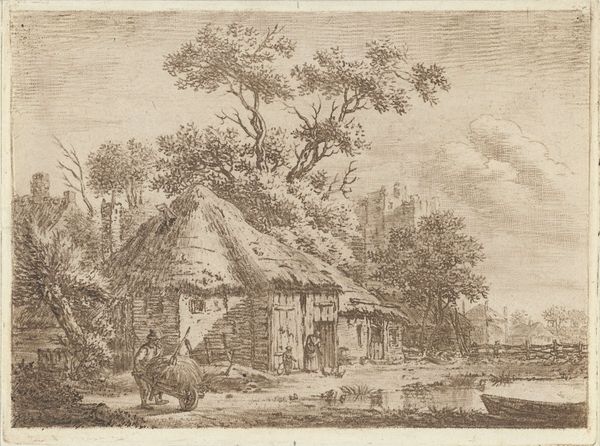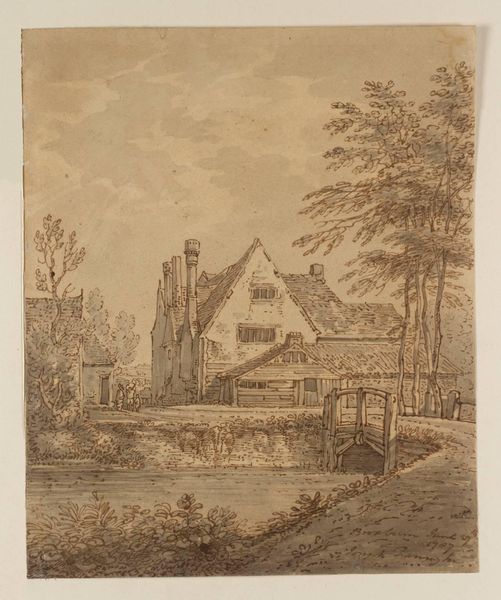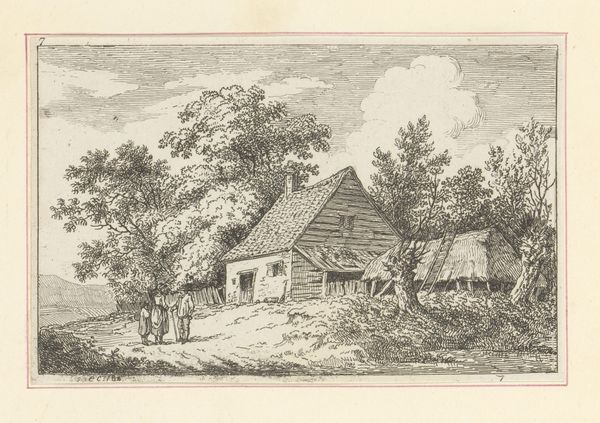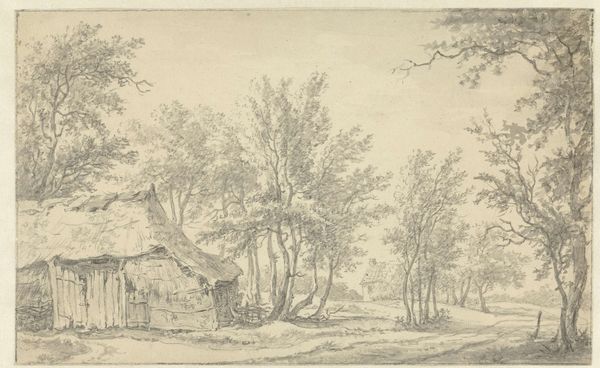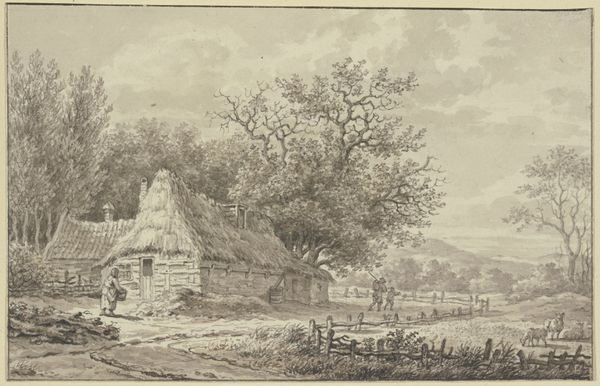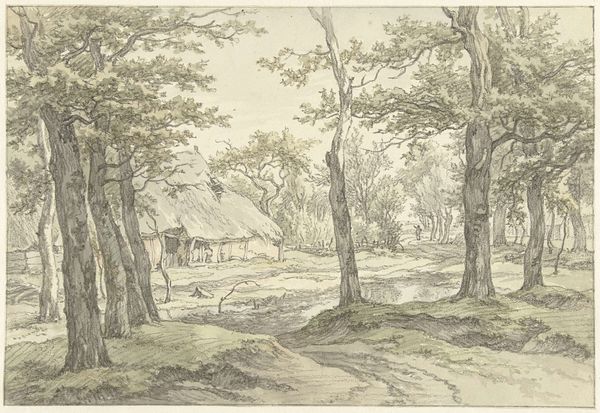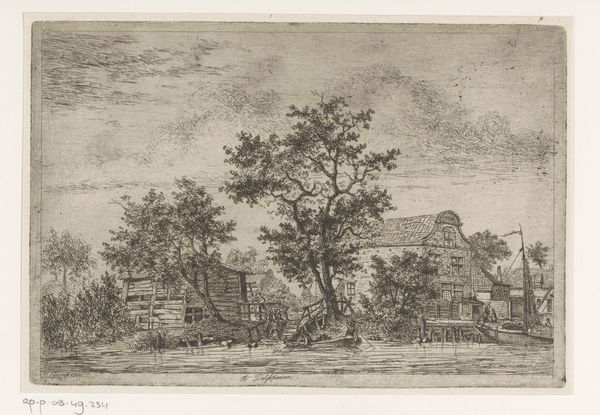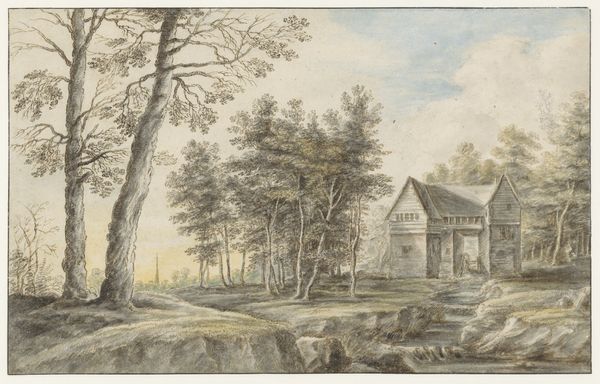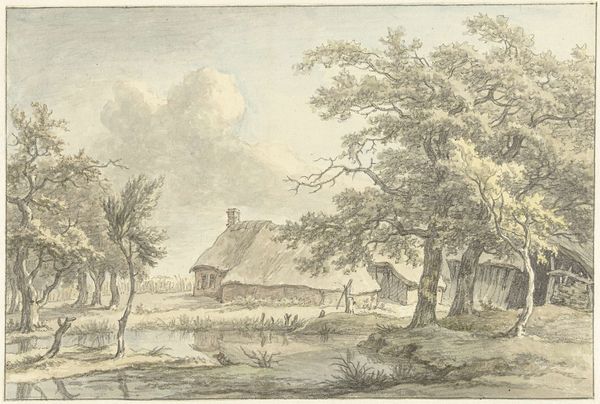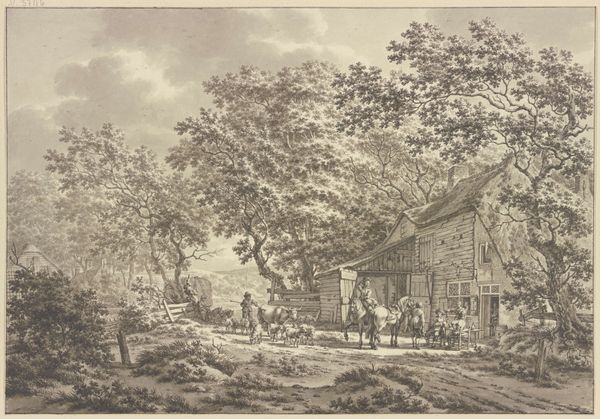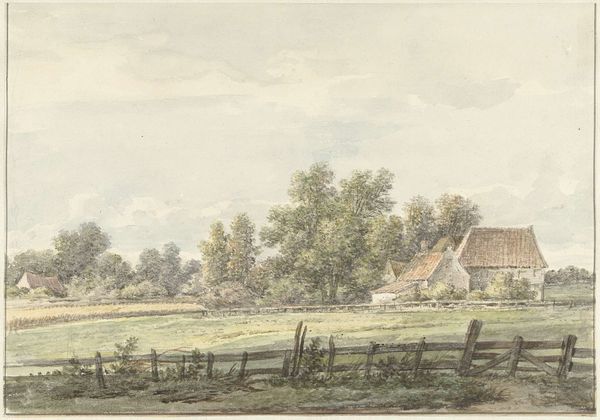
watercolor, pencil
#
tree
#
landscape illustration sketch
#
toned paper
#
pencil sketch
#
landscape
#
watercolor
#
coloured pencil
#
romanticism
#
pencil
#
watercolour bleed
#
watercolour illustration
#
pencil art
#
botanical art
#
watercolor
#
warm toned green
Dimensions: height 115 mm, width 154 mm
Copyright: Rijks Museum: Open Domain
Curator: Let’s take a closer look at this watercolor and pencil work, "House in a Wooded Environment" by Pieter Ernst Hendrik Praetorius, created sometime in the 1830s. Editor: My first thought is how overgrown it feels. The house is almost consumed by the surrounding foliage, there’s a real sense of nature reclaiming space. Curator: Exactly, the texture created by the layering of pencil and watercolour, gives the trees an almost tangible presence. Note the carefully observed tonal variations. These contrasts really highlight the structural qualities of the leaves. The romantic notion of the sublime clearly resonates within this piece. Editor: I see the Romantic influence, but I'm more struck by the vulnerability suggested. The house appears quite small and unassuming amidst such lush vegetation. Is this a comment on the precariousness of human settlement against the overwhelming force of nature? Who did this house belong to? How were the wealthy differently represented than the lower classes at this time? Curator: That is an interesting perspective. However, considering the period, and looking at the interplay of light and shadow, one can say that Praetorius' manipulation of form serves to enhance the idyllic atmosphere rather than focus on social critique. Notice, for instance, the artist's careful detailing in the articulation of planes on the facade, drawing the eye up and guiding the viewer to a solitary point in the landscape. Editor: But wouldn’t it be much richer if we took into consideration the role of property, ownership, and the exploitation of resources to examine landscape paintings more deeply? Surely Praetorius, a member of a prominent family of artists, had specific socio-political incentives that shaped his art? Curator: Of course, such factors provide additional lenses. But when appreciating works like this, we should remember the formal elements – the interplay of line, tone, and texture - that imbue the composition with so much strength. Editor: That attention to the technical skills is crucial; thank you for reminding us of the piece’s structural integrity. Still, context can unlock such works of art. It urges a discussion on a period when the Romantics confronted modernization and humanity's complex position within a rapidly altering natural world. Curator: It is indeed interesting to see how a close examination reveals a depth of artistic skill, which you have helped connect to relevant broader cultural implications. Editor: Likewise. Discussing art in this way illuminates and enriches our collective experience with art history.
Comments
No comments
Be the first to comment and join the conversation on the ultimate creative platform.
